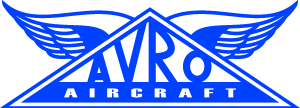.
History Boeing Military
Boeing B-52H Stratofortress
Produced 1952–1962
Number Built 744

The Boeing B-52 Stratofortress is an American long-range, subsonic, jet-powered strategic bomber. The B-52 was designed and built by Boeing, which has continued to provide support and upgrades. It has been operated by the United States Air Force (USAF) since the 1950s. The bomber can carry up to 70,000 pounds (32,000 kg) of weapons, and has a typical combat range of around 8,800 miles (14,200 km) without aerial refueling.
The B-52 shared many technological similarities with the preceding B-47 Stratojet strategic bomber. The two aircraft used the same basic design, such as swept wings and podded jet engines, and the cabin included the crew ejection systems. On the B-52D, the pilots and electronic countermeasures (ECM) operator ejected upwards, while the lower deck crew ejected downwards; until the B-52G, the gunner had to jettison the tail gun to bail out. The tail gunner in early model B-52s was located in the traditional location in the tail of the plane, with both visual and radar gun laying systems; in later models, the gunner was moved to the front of the fuselage, with gun laying carried out by radar alone, much like the B-58 Hustler's tail gun system
Because of the B-52's mission parameters, only modest maneuvers would be required with no need for spin recovery. The aircraft has a relatively small, narrow chord rudder, giving it limited yaw control authority. Originally an all-moving vertical stabilizer was to be used but was abandoned because of doubts about hydraulic actuator reliability. Because the aircraft has eight engines, asymmetrical thrust due to the loss of an engine in flight would be minimal and correctable with the narrow rudder. To assist with crosswind takeoffs and landings the main landing gear can be pivoted 20 degrees to either side from neutral. The crew would preset the yaw adjustable crosswind landing gear according to wind observations made on the ground.0
KmCeiling
0
KmRange
0
Km/HAircraft Speed
0
Max Crew
Photo Gallery
Boeing B-52H Stratofortress
Produced 1952–1962
Number Built 744


Boeing Military Airplanes
Boeing B-52H Stratofortress
Produced 1952–1962
Number Built 744
General characteristics
- Crew: 5 (pilot, copilot, weapon systems officer, navigator, electronic warfare officer)
- Length: 159 ft 4 in (48.5 m)
- Wingspan: 185 ft 0 in (56.4 m)
- Height: 40 ft 8 in (12.4 m)
- Wing area: 4,000 sq ft (370 m2)
Powerplant
- Empty weight: (83,250 kg)
- Gross weight: (120,000 kg)
- Max takeoff weight: (221,323 kg)
- Fuel capacity: 47,975 U.S. gal
- Zero-lift drag coefficient: 0.0119
- Drag area: 47.60 sq ft (4.42 m2)
- Aspect ratio: 8.56
- Powerplant: 8 × Pratt & Whitney TF33-P-3/103 turbofans, 17,000 lbf (76 kN) thrust each
Specifications
- Maximum speed: 650 mph (1,050
-
Cruise speed: 509 mph (819 km/h,
Combat range: (14,200 km, - Ferry range: (16,327 km,
- Service ceiling: (15,000 m)
- Rate of climb: 6,270 ft/min (31.85 m/s)
- Wing loading: 120 lb/sq ft (586 kg/m2)
Related development
- Guns: 1× 20 mm (0.787 in) M61 Vulcan cannon originally mounted in a remote-controlled tail turret on the H-model, removed in 1991 from all operational aircraft.
- Bombs: Approximately 70,000 pounds (32,000 kg) mixed ordnance; bombs, mines, missiles, in various configurations.
-
Boeing B-52H Stratofortress
Links to Youtube & Others
The ability to carry up to 20 AGM-69 SRAM nuclear missiles was added to G and H models, starting in 1971. To further improve its offensive ability, air-launched cruise missiles (ALCMs) were fitted.
Boeing
B-52H Stratofortress
During ground testing on 29 November 1951, the XB-52's pneumatic system failed during a full-pressure test.
Youtube Link
In September 2006, the B-52 became one of the first US military aircraft to fly using alternative fuel. It took off from Edwards Air Force Base.









.svg.png)


